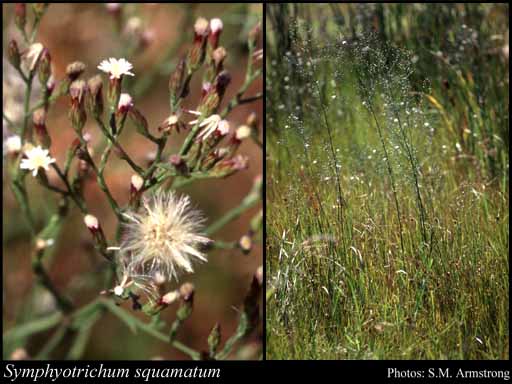- Reference
- Phytologia 77:292 (1995)
- Conservation Code
- Not threatened
- Naturalised Status
- Alien to Western Australia
- Name Status
- Current
Slender, erect herb, 0.3-2 m high. Fl. yellow/green/cream/white, Feb to Aug. Loamy soils, peaty sand, deep white sand, granite, laterite, basalt. Banks of creeks, rivers & swamps,winter- wet sites, coastal plains, road verges.

Distribution
- IBRA Regions
- Avon Wheatbelt, Coolgardie, Esperance Plains, Geraldton Sandplains, Indian Tropical Islands, Jarrah Forest, Pilbara, Swan Coastal Plain, Warren.
- IBRA Subregions
- Dandaragan Plateau, Eastern Goldfield, Geraldton Hills, Hamersley, Katanning, Northern Jarrah Forest, Perth, Recherche, Southern Jarrah Forest, Warren.
- IMCRA Regions
- Abrolhos Islands, Leeuwin-Naturaliste, Pilbara (nearshore), WA South Coast.
- Local Government Areas (LGAs)
- Albany, Augusta Margaret River, Bayswater, Belmont, Boddington, Bridgetown-Greenbushes, Bunbury, Busselton, Canning, Christmas Island, Cockburn, Dardanup, Denmark, East Pilbara, Esperance, Gingin, Gosnells, Greater Geraldton, Harvey, Irwin, Kalgoorlie-Boulder, Manjimup, Melville, Mingenew, Murray, Narrogin, Nedlands, Northam, Northampton, Pingelly, Plantagenet, Port Hedland, Rockingham, Serpentine-Jarrahdale, South Perth, Stirling, Swan, Victoria Plains, Wandering.
Management Notes (for the Swan NRM Region)
Alternative Names. Southeastern Annual Saltmarsh Aster, Aster weed Marsh Aster, , Shrub Aster Wild Aster.
General Biology. Growth form. Herb. Life form. Annual. Reproduction. Seed. Dispersal. Wind.
Notes. May also be biennial or short-lived perennial. Also naturalised in Europe, Mediterranean region, United States, Central America. Colonises disturbed wetlands. Summer-growing. Is an indicator for sites with high salinity and low/moderate waterlogging.
Additional information. Origin. South America. Similar exotic species. Conyza spp.
Suggested method of management and control. Hand remove isolated plants before seed set. Read the manufacturers' labels and material safety data sheets before using herbicides. For further information consult the Australian Pesticides and Veterinary Medicines Authority to determine the status of permits for your situation or state.
Management Calendar
| Calendar Type | Jan | Feb | Mar | Apr | May | Jun | Jul | Aug | Sep | Oct | Nov | Dec | Comments |
|---|---|---|---|---|---|---|---|---|---|---|---|---|---|
| Germination | U | U | U | ||||||||||
| Active Growth | Y | Y | Y | ||||||||||
| Flowering | Y | Y | Y | Y | |||||||||
| Fruiting | O | Y | Y | O | |||||||||
| Manual Removal | Y | O | Y |
Legend: Y = Yes, regularly, O = Occasionally, U = Uncertain, referred by others but not confirmed.
References
- Brown, K. & Brooks, K. (2002) Bushland Weeds: A Practical Guide to their Management. Environmental Weeds Action Network, Greenwood.
- Hussey, B.M.J., Keighery, G.J., Dodd, J., Lloyd, S.G. & Cousens, R.D. (2007) Western Weeds. A guide to the weeds of Western Australia. 2nd Edition. The Plant Protection Society of Western Australia, Victoria Park.
- Moore, C.B. & Moore, J.H. (2002) Herbiguide, the pesticide expert on a disk. Herbiguide, PO Box 44 Albany, Western Australia, 6330.
- Sustainable Grazing on Saline Lands initiative (Undated) Saltland genie: Measuring salinity & waterlogging. Land, Water & Wool Program and the Future Farm Industries Cooperative Research Centre URL: http://www.saltlandgenie.org.au/all-about-saltland/unit-7-toolbox/measuring-salinity-and-waterlogging.htm#7.2b - Accessed May 2010.
- USDA, ARS, National Genetic Resources Program (2009) Germplasm Resources Information Network - (GRIN). National Germplasm Resources Laboratory, Beltsville, Maryland. URL: https://npgsweb.ars-grin.gov/gringlobal/taxon/taxonomysimple.aspx - Accessed October 2009.